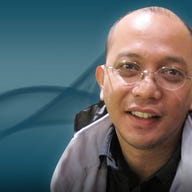An inconvenient healthcare reality


In the Philippines, healthcare is almost an alien concept to half of the local population, especially to those living in remote villages. Would you believe that 50 percent of Filipinos die without ever seeing a doctor in their entire lives?
Unlike in developed markets like the Unites States where healthcare is always a hot issue during elections, politicians here in the Philippines don't seem to give a hoot to this national concern. As part of the wealthy few who have the means to send themselves to the hospital in case of illness and emergency, government leaders and lawmakers seem not interested at all in overhauling the country's inept healthcare system.
To illustrate my point, I'm taking myself as an example. As a freelance writer, a certain portion of my pay is automatically taken away as a "withholding tax" by the government. However, I'm not covered by any healthcare plan. Without any savings in the bank, I'm good as dead meat if a nasty virus hits my vulnerable body.
So, why am I discussing healthcare in an IT blog? That's because IT, it seems, has a real potential in bringing healthcare to the greater number of people who do not have the capacity to pay those costly bills charged by healthcare institutions.
I really don't blame those private hospitals and medical centers that impose sky-high fees--they need the money to operate their business and buy the necessary equipment. But the government, by collecting tax, ought to have some obligation to the people by placing a practical, working plan that allows access to decent healthcare for the common folk.
Recently, Cyberpress, the journalist group which I'm heading, had its regular discussion forum and tackled the growing synergy of the IT and healthcare sectors. It was eye-opening for me for two reasons: that profit-oriented private hospitals have a role to fulfill in bringing cutting-edge technology to the medical industry, and that IT can serve as an instrument to bring healthcare to the masses, particularly in far-flung areas.
Dr. Alvin Marcelo, director of the National Telehealth Center in University of the Philippines in Manila, said "telemedicine" modalities such as text messaging, multimedia messaging system (MMS) and voice over Internet protocol (VoIP), can help serve remote areas where the availability of doctors and health professionals is scarce.
IT, Marcelo said, "can help reintegrate the system" by bringing together a network of doctors and healthcare workers in remote or under-served communities, and linking them with doctors in urban areas who can help diagnose and treat provincial patients using mobile phones, the Internet and--in cases where the remote area also suffers a lack of electricity--radio communication.
At the National Telehealth Center, Marcelo said patient records are compiled and kept using open source software, which he said is is easy-to-use, customizable, and capable of generating standard reports for local, provincial and regional patients.
The center also offers e-learning in the form of a collection of formal and non-formal courses, such as masters of science in health informatics; geographic information systems for health leaders; e-health project management and; e-learning for community health. The modules are taught by distance learning using VoIP, cellular phone, radio, or whatever means is available.
In the case of the private healthcare sector, De Los Santos-STI MegaClinic's administrative director Jose Ronaldo De Los Santos, said "never in the history of healthcare that IT has been as important as medical expertise and specialized medical equipment".
At the conclusion of the forum, it was agreed that although the public and private sectors are using IT on contrasting levels, innovative technologies could serve as a tool for bridging the country's yawning health gap.